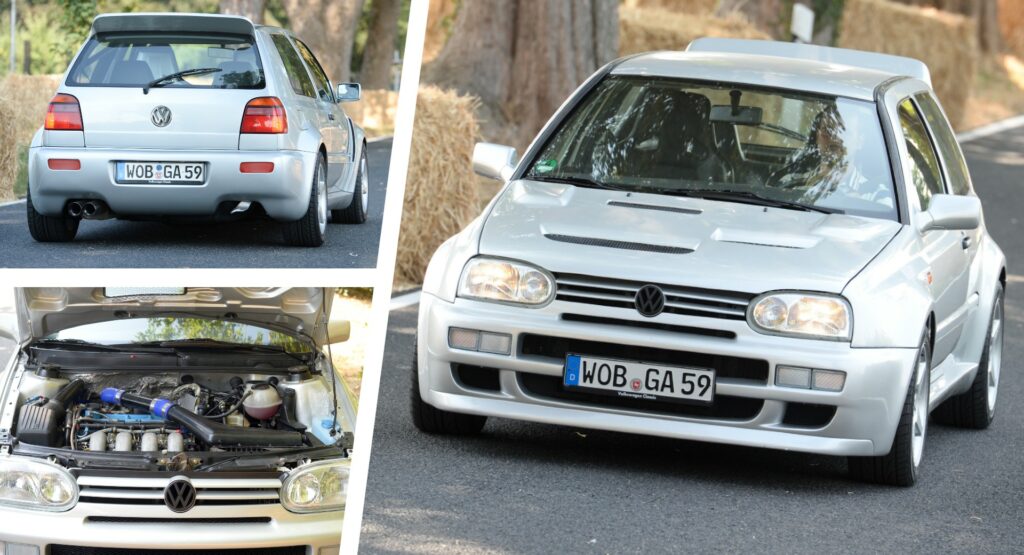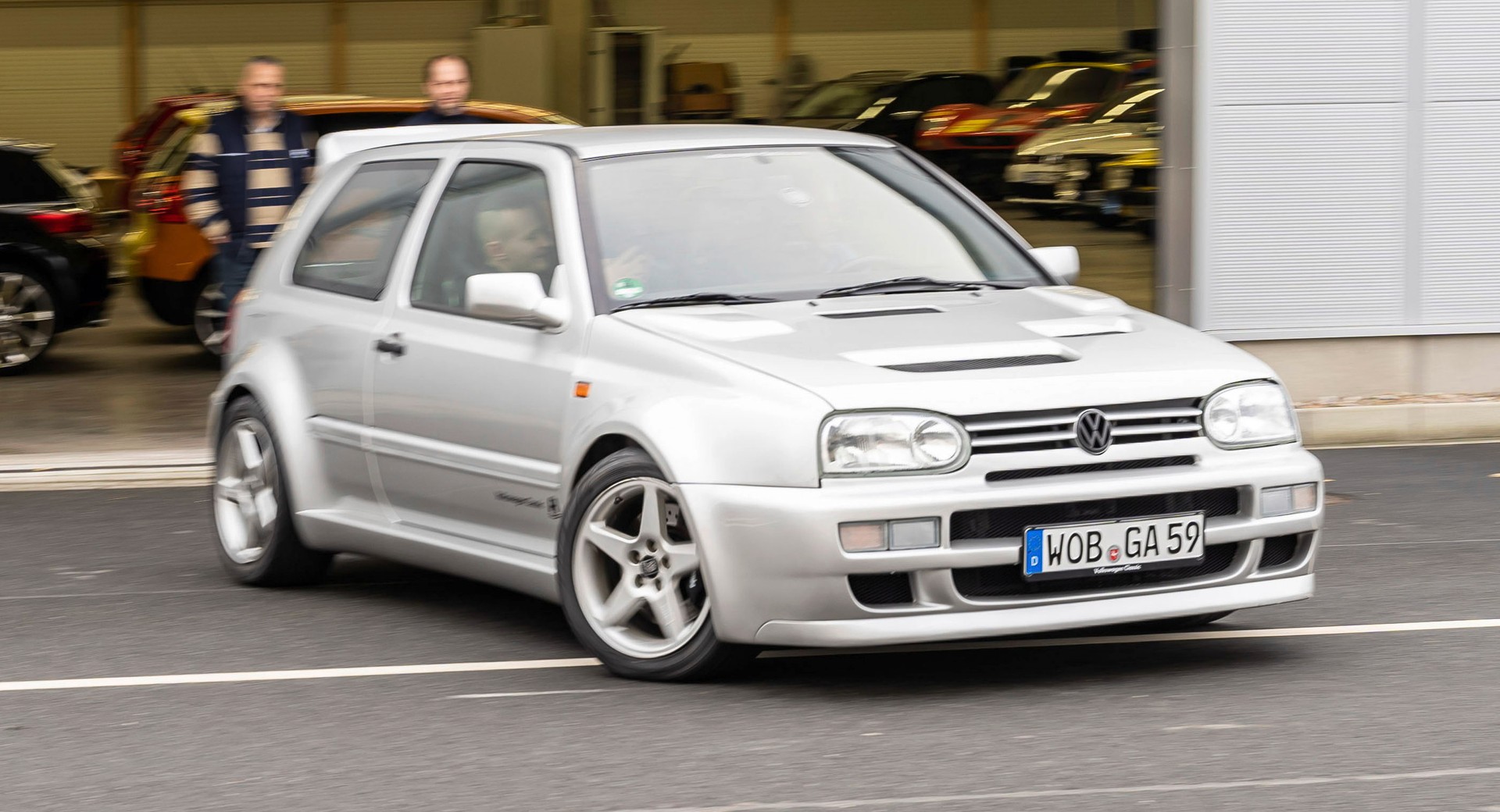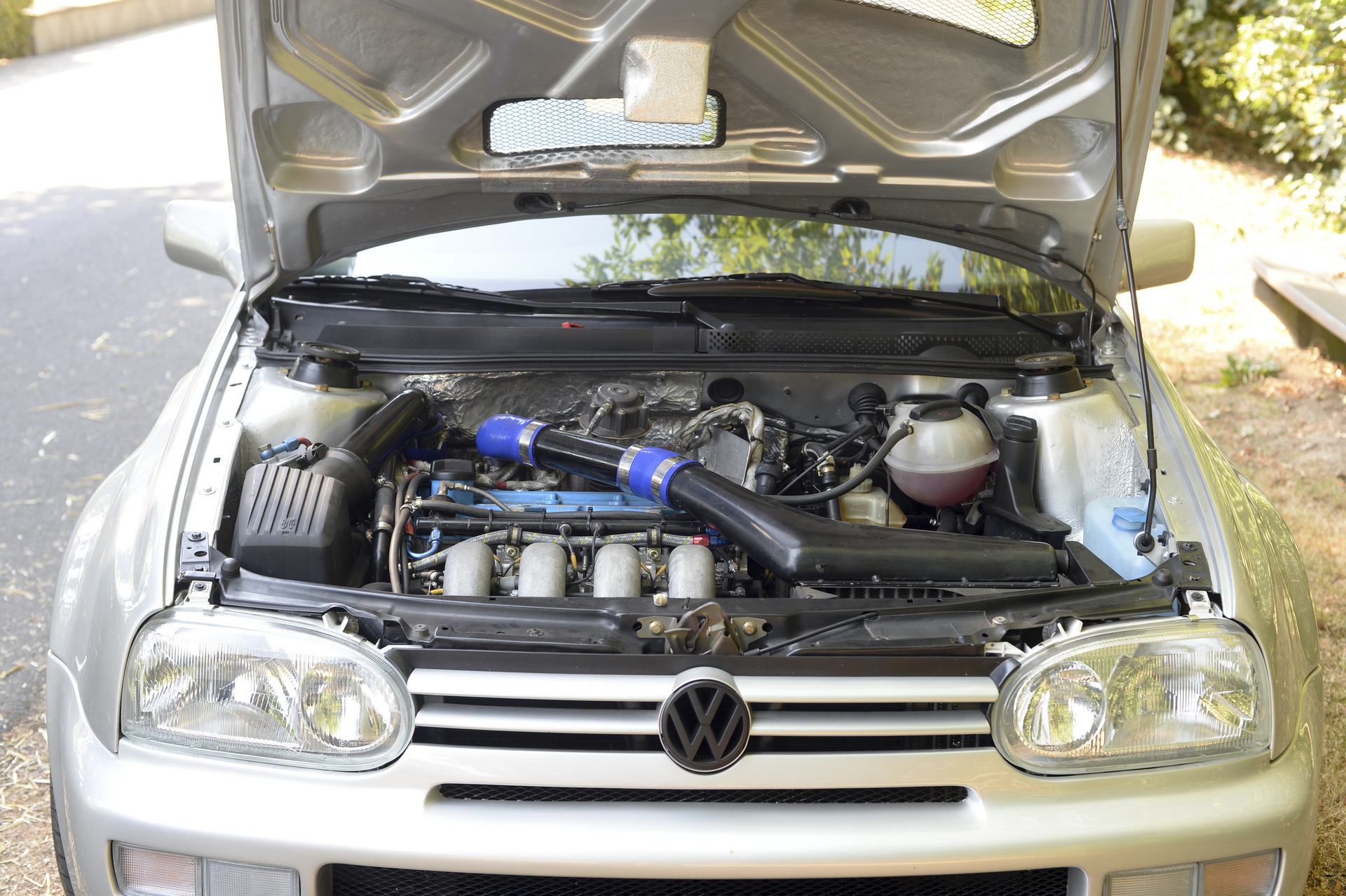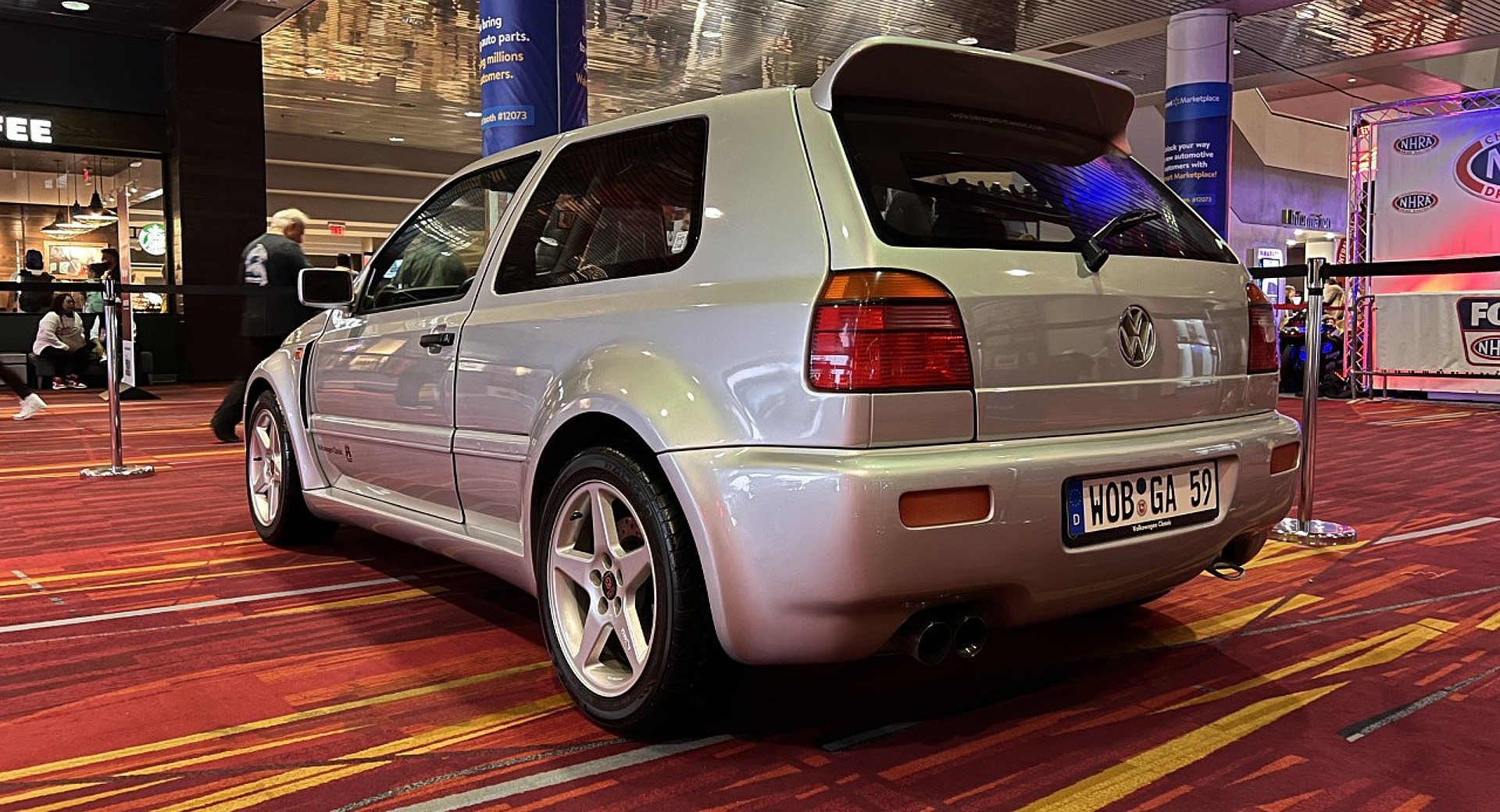
Volkswagen brought a number of concepts to SEMA 2022 but the one that caught our eye is the older of the bunch. The VW Golf MK3 “Rallye” is a forgotten hot hatch prototype developed in the early ’90s as a feasibility study for the automaker’s potential involvement in the WRC. The project was shelved but the concept of the homologation special exists and it’s fully functional.
The special Golf, codenamed A59, was built by Cadolzburg-based Schmidt Motorsport (SMS) in 1993. The reason that a road-going model was needed is that FIA’s regulations for the 1994 World Rally Championship required each automaker to produce 2,500 homologation specials of the participating rallycar. Think of this unrealized project as the equivalent of the Lancia Delta HF Integrale, the Subaru Impreza WRX STI, or the Mitsubishi Lancer Evolution.
Read: 329-HP Volkswagen Golf R 20 Years Edition Is Most Powerful Golf Yet
Visually, the prototype is distinguished from any other Golf Mk3 thanks to the unique lightweight bodykit made of carbon fiber and Kevlar. Overall, it looks like the great-grandfather of the Golf R and a worthy predecessor of crazy concepts like the Golf GTI W12.
The additional intakes and the pronounced chin on the front bumper, the vented hood made of GRP, and the significantly wider fenders are a starter pack for any WRC-inspired model. The same applies to the tail, featuring a properly large spoiler and a sporty bumper that has space for four exhaust pipes – although the “Rallye” ended up with two.
The license plate is relocated to the bumper making room for a large VW badge on the custom plastic tailgate. The side windows and rear windscreen are also made of plastic for weight-saving reasons. Inside, VW fitted a pair of heavy-bolstered Recaro A8 seats, a three-spoke steering wheel, a digital instrument cluster, extra controls, and a roll cage for safety.
What is more interesting than the looks is the unique drivetrain. Under the bonnet lies a bespoke turbocharged 2.0-liter four-cylinder all-aluminum engine producing 271 hp (202 kW / 275 PS) and 370 Nm (273 lb-ft) of torque. This comfortably sits in the hot hatch territory even by today’s standards, so imagine hearing those numbers in an era when the VW Golf GTI started from as low as 113 hp (85 kW / 115 PS) from a naturally-aspirated 2.0-liter engine. Even the performance flagship VW Golf VR6 made a humble 187 hp (140 kW / 190 PS) from its 2.9-liter six-cylinder engine.
In the “Rallye” Golf power was transmitted to all four wheels through a six-speed manual gearbox and a motorsport-grade AWD system featuring a hydraulically controlled variable center differential and a limited-slip rear differential. We don’t have any acceleration figures but with a top speed of 270 km/h (168 mph), the A59 was faster than any factory-spec Golf at the time and for years to come.
The chassis setup was equally impressive with Bilstein shock absorbers at the front featuring longer travel and wider control arms, and a multi-link design with Bilstein struts at the back. The 16-inch Speedline SL817 alloy wheels were shod in wider 225/45R16 tires, hiding cross-drilled brake discs by Brembo behind them.
Unfortunately, the Golf Mk3 “Rallye” didn’t get the green light for production as VW Motorsport decided against joining the WRC. According to the automaker, two prototypes of the model were built, with only one of them being driveable. The most extreme and powerful Golf Mk3 is showcased this year at SEMA in one of its rare appearances outside Volkswagen’s premises in Germany.














